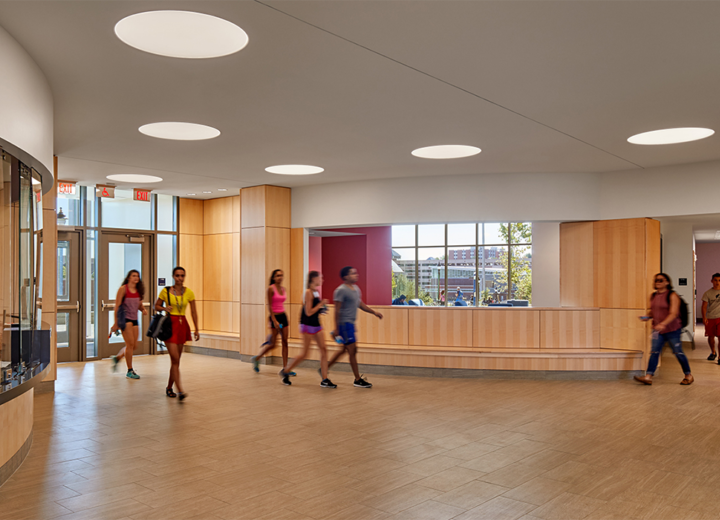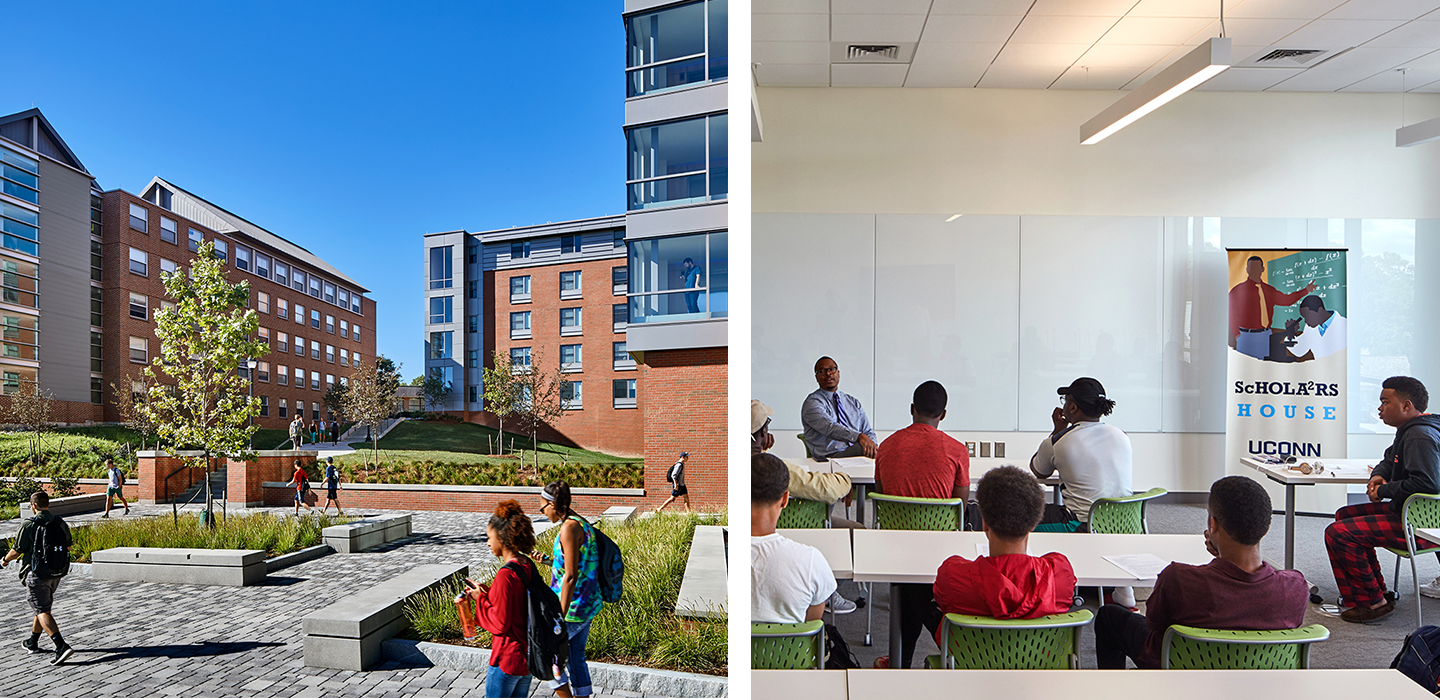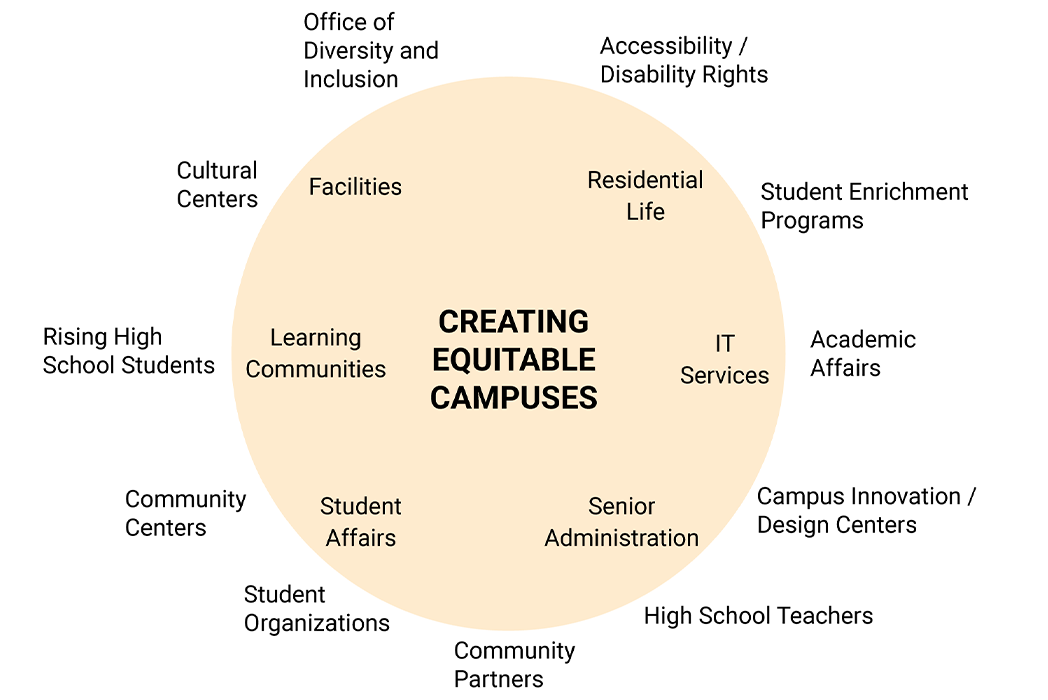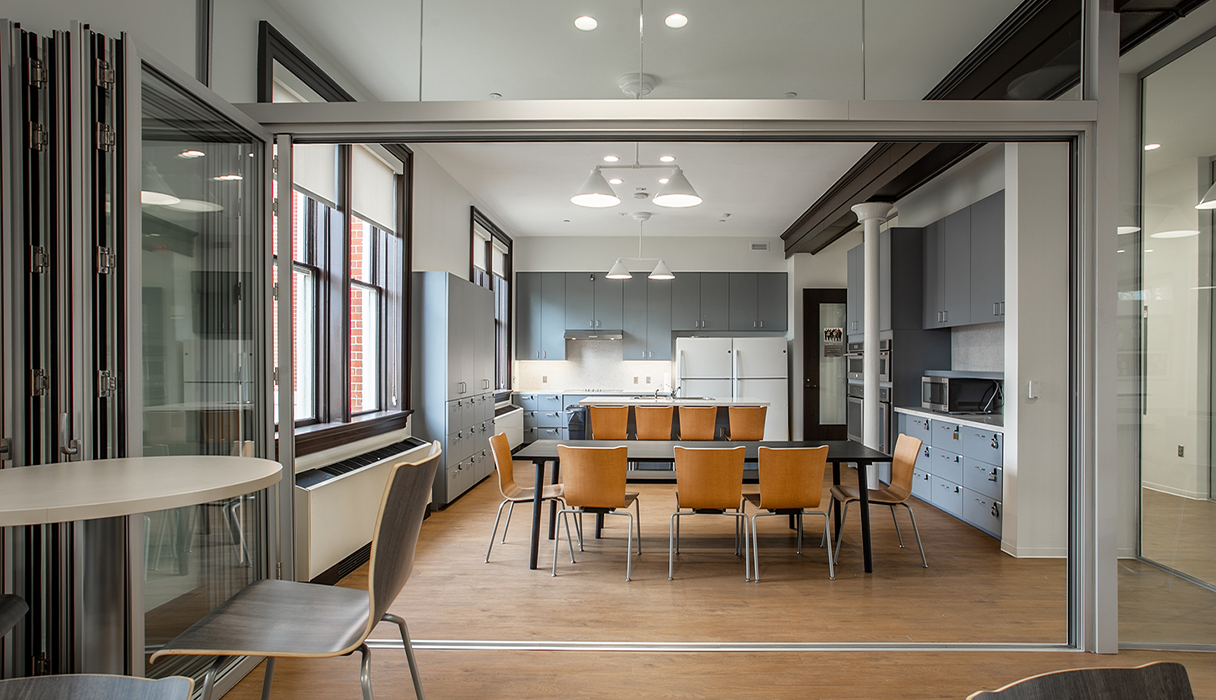Sorry, we could not find what you are looking for.
You can try again or take a look here.
Sorry, we could not find what you are looking for.
You can try again or take a look here.
Events
7/7/21

Last month, Newman principal and NOMA CT founder José Hernández presented in the webinar, “Deconstructing How We Build: Inclusive University Housing,” organized by Demographic Perspectives and sponsored by Boston Society of Architects and Society for College and University Planning.
Newman collaborator and Demographic Perspectives principal and founder, Rena Cheskis-Gold, selected José from among a nationwide group of architects after hearing him speak about Newman’s Diversity, Equity, and Inclusion (DEI) work for a large UConn student residence at a national conference. José joined a prestigious panel of higher ed administrators and architects from across the country, including Vennie Gore, Senior VP for Residential and Hospitality Services at Michigan State; Dr. G. Christopher Hunt, Associate Provost for Community, Equity, and Diversity at University of New England; and Jonathan Moody, AIA, President of Moody Nolan Architects.
Rena led the panel in a lively discussion exploring how DEI efforts have become imperative initiatives for building community and equipping campuses to educate young people who can transform society. Panelists noted how these initiatives are especially important in student housing, as it seeks to offer healthy, safe, and developmentally appropriate environments that bring residents from different backgrounds together to interact and learn from living with one another.
Case studies of recent projects illustrated principles for planning, designing, and building inclusive spaces and programs to support diverse student identities, defining a new project delivery process with DEI as a core principle.
José spoke about Newman’s experience designing and building the Werth Residential Tower at UConn as a home for intentional living groups that support previously under-served students in starting careers in STEM fields. He emphasized how this project demonstrated the importance of bringing diverse, new voices to the table early in project definition so these previously ignored perspectives could guide the programming and design of truly inclusive residences.

In another recent webinar for ACUHO, José shared lessons learned, including presentations by former student residents and RAs who spoke of the building’s impact on their lives, through its learning communities, support staff in residence, and empowering innovation center facilities it put at their disposal.
José related that, while the project broke new DEI ground for Newman, predetermined project procedures limited how far the team could depart from conventional student residence design and process. From the experience, Newman saw opportunities to configure student residences in new ways that could achieve DEI goals more effectively in the future when built into the planning process from the outset.
Newman’s long history designing student residences has shown how evoking archetypes of home promotes student academic and social success. It helps students feel welcome and confident in building the relationships and taking the risks inherent in personal development. Yet we have historically worked from a relatively narrow sense of what “home” looks like. Members of a truly diverse, equitable, and inclusive learning community would bring other ideas of “home” with them, responding to other archetypes and other forms of architectural expression.
José discussed how Newman studied other voices available at UConn, with project partners after construction, as a case study in cultural resources for designers looking to create more DEI-responsive student residences. The findings appear in the diagram below, suggesting that a similar wealth of people and organizations may be found at every college and university, ready to help designers and administrators shape student residences that will nurture learning communities whose alums will change society.

In two recent historic residence renovations at the University of Mary Washington, Newman led programming efforts engaging student organizations and affinity groups that influenced the design of the common and amenity spaces. The balance shifted in favor of more flexible spaces in which to gather the building community both socially and academically, a new take on the Living-and-Learning Model. While the historic fabrics of these buildings limited the degree to which Newman could reshape residential life in pursuit of DEI, these projects still offer glimpses of fruitful new directions.

Looking ahead, Newman is committed to finding more ways in which to collaborate inclusively and equitably with diverse voices that can help change the higher ed built environment to grow learners who can change society.